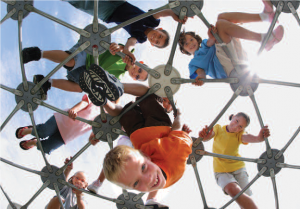Five challenges facing New Jersey education

Photo credit: iStockphoto/Thinkstock
Most school administrators wouldn’t trade their job for anyone else’s. That being said, most wouldn’t wish their job on their worst enemy. Whether calling the shots in a public, private, faith-based or boarding school, the people who run New Jersey’s halls of education are engaged in a never-ending game of Whack-A-Mole: As soon as one problem is addressed, two more always seem to pop up. None of these problems, it is worth noting, is simple. Nor is much in the way of extra help available to deal with them. In fact, since the 1980s, the number of teachers in New Jersey has grown by nearly a third. The number of administrators during that time has gone up a mere two percent. New Jersey’s public schools handle about 1.4 million kids in a given year, and their budgets make up the largest state-funded operation.
Our students rank high nationally in reading, writing and arithmetic, and we have the best high-school graduation rate in the country. New Jersey’s private schools rank among the best in the nation, too. Even so, our schools—all of our schools—have had to face significant challenges in the early part of the 21st century. Some are obvious, like budgeting. Everyone could use more money, from language arts instructors to librarians to lunch ladies. At the same time, budget reformers are looking for creative ways to slash school budgets, which in some places are driving property taxes up so high that many residents can’t afford to stay in the towns they’ve lived in for generations. In these pages, we’ll veer off the beaten path a bit and look at five topics that you either don’t hear much about, or don’t think about too much when you do hear about them. All are on the daily schedule for school administrators, and present some of their most difficult challenges.
TEACHER PERFORMANCE This is an incredibly complex issue. Who are the best teachers? Are they the ones who consistently turn out superb test-takers? Are they the ones whose students come back to visit 10 and 20 years later? Are they the ones who take thankless jobs in the most troubled school systems? These questions are not only relevant from a quality-of-education standpoint. With more and more discussion about the creation of incentives for great teachers—and a mechanism for getting rid of some lousy ones—there will be a need for some quantifiable measurements. And those measurements will have to include metrics that take into account the challenges each educator faces in his or her classroom. That is why all eyes are focused on the Newark school system, which famously received a pile of Facebook stock from Mark Zuckerberg three years ago.
In the new contract negotiated with city teachers at the end of 2012, there is a provision for merit pay. Teachers rated as “highly effective” can now pocket $5,000 in bonus money, which comes right out of the Facebook fund. Teachers in the more troubled schools can earn even more, as can math and science teachers. Teachers rated as “effective” will receive an agreed-upon pay raise every year they maintain that standing. Newark’s teachers are represented by the American Federation of Teachers, which negotiated the bonus terms. Most public educators in the state are represented by the New Jersey Education Association, which to this point has stood firmly against a bonus scheme. Needless to say, the NJEA will come under pressure to consider teacher bonuses if the Newark experiment is a success. What does success look like? More money for outstanding teachers, a fair wage for competent ones, and perhaps a way to ease out chronic under-performers.
SECURITY In the wake of the New-town tragedy, every school in the state had to reexamine its readiness and vulnerability in emergency situations. The process was expensive, time-consuming and eye-opening. For a while, everyone was nattering about armed guards in the hallways and even armed teachers in the classrooms. It appears that cooler heads have prevailed. The fact of the matter is that armed intruders are incredibly rare; a far more likely emergency scenario is an out-of-control parent, power failure or dangerous weather event. The bad news is that most New Jersey schools lack adequate staff training on the procedures needed to deal with these emergencies. There is actually an Office of School Preparedness and Emergency Planning. As you might imagine, its inspectors have been very busy since the Sandy Hook shootings. Some of their visits are scheduled, while others are unannounced. The goal is not to “catch” public schools unprepared, but to make sure that they follow a set protocol for lock-downs and other safety drills. The state has always had relatively strict drill requirements, so it has been more of a fine-tuning process than an overhaul.
Private schools are a different matter. They tend to operate more openly to project a warm and welcoming feeling to current and prospective parents. Many of these schools have drop-off and pick-up “traditions” that they are reluctant to change, even when they might compromise security. In some schools, parents could slap a Visitor sticker on and roam the halls without attracting a second look. Well, this situation has changed dramatically in the last year. Parents who were once charmed by a feeling of openness have started looking at their schools with a more critical eye. As a result, most private schools—at considerable expense—have undergone security audits, and are now making substantial changes to their physical spaces, technology, and visitor policies. These changes have to be paid for. In some cases, schools will dip into their endowments. In others, there will be a noticeable bump in tuition.
HOMEWORK The point of homework is not just to educate students outside the classroom. It helps them develop time-management skills and teaches them lessons in accountability they will need to learn before moving on to college or into the workforce. The challenge public schools face is that students who will not (or cannot) complete their homework assignments fall behind the rest of the class. They become disinterested or disenchanted or disruptive. Over the course of a semester, depending on the school system, a teacher who is tough about homework is likely to find a large portion of the class far behind by the time final grades are given. In subjects where testing is used to measure a school’s success (and by extension, a teacher’s effectiveness), everyone loses. So what’s a teacher to do? In many instances, a large portion of class time is now devoted to getting homework done!
This is the only way to ensure that every student is on the same page. Unfortunately, this limits the amount of material that can be covered in class. It is also creating a generation of kids with a lot of un-monitored after-school time to kill, which isn’t necessarily a good thing. The challenge for private schools where homework is concerned often comes down to blow-back from parents about too much. Above 5th or 6th grades, most private schools have a policy limiting homework to no more than 15 to 30 minutes per subject. Of course, if three classes give a half-hour each, a project is due in a fourth class, and a student needs to study for a quiz or exam in a fifth class, the result can be a meltdown. And guess who deals with that? The parents…who are paying thousands of dollars a year (sometimes tens of thousands) in tuition. Many feel that this buys them the privilege of not having to crack the whip on homework assignments.

Photo credit: iStockphoto/Thinkstock
RECESS (aka GYM) Recess—or free time for physical activities—has long been a tradition in both public and private education. Researchers agree that its value includes the development of cognitive skills outside the classroom environment, including cooperation, teamwork and communication. Recess has also been shown to have a direct link to improved academic performance. And, of course, activity during the school day is one way of addressing the obesity issue. The problem is that the number of schools with a structured PE curriculum is shrinking—in some cases for budgetary or manpower reasons, in others because of liability concerns.
In schools that need to improve their measurable academic success, outdoor time has actually been cancelled to give students extra time to prep for tests. Those schools that continue to schedule recess or gym classes have in many cases devolved into little more than active socializing. Indeed, at some schools, “walking and talking” constitutes an adequate amount of physical activity. A recent study estimated that two in five schools have either eliminated recess or reduced it. In lower-income districts, the cuts have been even more dramatic. The situation has become so distressing that, this past year, Shirley Turner, a state senator representing portions of Mercer and Hunterdon Counties, introduced a bill requiring public schools to provide a daily recess period, but only through fifth grade.
BULLYING In the last five years, national attention has been focused on the issue of bullying in schools. It is on the rise nationwide, and in New Jersey, too. The rapid growth of social media has certainly added fuel to what was a smoldering fire. So, too, has the focus on confrontation in the reality shows that young people watch. Schools have combated this growing problem as best they can, including a stronger anti-bullying law that went into effect in New Jersey during the 2011–12 school year. That law compelled schools to designate an Anti-Bullying Coordinator, who must report every incident. Prior to the 2011 legislation, reports of school bullying had risen sharply, by 15 to 20%, over a three-year period, according to the state’s Department of Education. Critics of the new rule claimed that the stricter reporting requirement might send the bullying numbers soaring.
However, this doesn’t appear to be the case. In some districts, bullying incidents actually fell. In others they remained fairly consistent. In a few, they spiked. Who are the bullies? About a third of reported incidents involve seventh- and eighth-graders. A quarter occur among ninth- and tenth-graders. Fewer than 1 in 20 of these incidents was linked to racial or religious bias, so basically it’s kids being jerks. Some have posited that the rise in bullying may be linked to the punishment now meted out in public schools for physical violence. In the old days, standing up to a bully meant punching him in the mouth—or at least making yourself a hard target. Now that response would carry an automatic suspension. Others point out that if a bully is using social media as a weapon, a punch in the mouth isn’t even an option anymore. The notion that bullying is less of a problem in private schools may be accurate, but it is not supported by any hard numbers. Those institutions are not compelled to report bullying, and each sets its own policy. To be certain, bullying does occur in New Jersey’s private, faith-based and boarding schools. It may be more subtle or sophisticated, and some cases may involve influential families, so administrators must tread lightly before dropping the hammer on a bully.
Editor’s Note: What might this same article include a year from now? Some trends to keep an eye on are New Jersey’s adoption of national Common Core standards. New York adopted them recently and saw its test scores fall. It will also be interesting to watch the development of Governor Christie’s Regional Achievement Centers, which are meant to be a resource for teachers and parents, but thus far have been underutilized. And finally, a debate may be on the horizon regarding the skyrocketing costs of special education.
Of note to teachers and parents: TRMC’s Department of Behavioral Health & Psychiatry produced Step-Up, Take Action: When Does a Child Need Help? Log onto edgemagonline.com for a free PDF version in English or Spanish.





